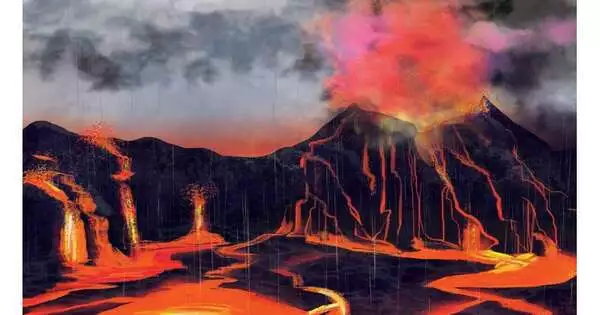Long before there were dinosaurs, Earth was ruled by creatures that, in many ways, were even more amazing.
Large armored reptiles the size of buffalo were stalked by carnivores like Titanophoneus, also known as the “titanic murderer.”
Approximately 260 million years ago, during the Capitanian Age, a mass extinction wiped out many of these animals.
An international team of researchers has now claimed that evidence suggests this mass extinction was actually two separate events, separated by nearly 3 million years. Massive volcanic eruptions were the same thing that caused both
“We are researching the Permian biocrisis, but similar warming is occurring today as a result of human activity.” As a result of carbon emissions into the atmosphere, humans are imitating the impacts of volcanic eruptions.”
Thomas Algeo, a study co-author and University of Cincinnati professor of geosciences.
Researchers found two “pulses” in which the oceans lost their ability to produce oxygen by examining the uranium isotope profiles of marine samples taken from the South China Sea.
Researchers claim that their analysis shows that the oceans’ lack of oxygen caused two mass extinctions to occur in the Middle Permian Period, around 259 million and 262 million years ago. The study was published in the journal Earth and Planetary Science Letters.
Climate catastrophe that is imminent.
Researchers can more accurately predict how current global warming might affect the ocean’s food chain by studying these historic extinctions.
According to Thomas Algeo, co-author of the study and professor of geosciences at the University of Cincinnati, “We are studying the biocrisis in the Permian Period, but similar warming is happening today because of human events.”. “As a result of the release of carbon into the atmosphere, humans are imitating the effects of volcanic eruptions.”.
Huyue Song, a former postdoctoral researcher at UC, led the study at the China University of Geosciences.
The environmental changes that occurred during the Middle Permian biological crisis interval are analogous to those we are currently experiencing, according to Song, which include global warming, ocean hypoxia, seawater acidification, and biodiversity decline.
The greatest of all mass extinctions, known as “the great dying,” which occurred 252 million years ago and killed 90 percent of marine life and 70 percent of land animals, is one of the five that scientists have identified. Algeo claimed that the massive volcanic activity that caused the seas to become dead zones also contributed to this disaster.
Algeo stated that although the Capitanian extinctions are not among the “Big Five,” they are still important.
In what ways do volcanic eruptions cause extinctions?
Massive eruptions, according to Algeo, cause much longer periods of global warming after a brief period of cooling caused by ash in the upper atmosphere reflecting sunlight. The oceans warmed as a result of the massive greenhouse gas emissions. The food chain eventually collapsed because the warm surface water did not allow dissolved oxygen to reach deeper levels.
He described this lack of oxygen as “the ocean teetering on the edge of anoxia.”. “The surface layer must take up any oxygen that has been dissolved and supply it to the deep ocean. However, less dense water is warmer. The overturn is prevented, and dissolved oxygen cannot reach the deeper layers when the density differential is increased.”.
Searching for mercury in the sedimentary layers is one method by which researchers can recognize these enormous volcanic eruptions.
Mercury has been proven to be a helpful substitute for volcanic eruptions, according to Algeo. Mercury is emitted into the atmosphere during large volcanic eruptions, where it is carried by the planet’s magnetic field and settles in marine sediments.”.
According to scientists, Siberia is where the volcanic eruptions that caused the Great Dying began. The Emeishan Large Igneous Province in southwest China is the location of the eruptions that brought about the twin mass extinction events in the Permian.
Algeo stated he was interested in seeing if any terrestrial evidence could be found to back up the conclusions drawn from their investigation into ancient oceans. He believes that geology will help to solve more mysteries about early Earth life.
The past of the Earth has been thoroughly understood over the past 40 years, according to Algeo. “It’s partly because we have so many new tools at our disposal. And compared to a generation ago, there are a lot more people working in this field today.”.
The two catastrophes in the Permian, according to researcher Song, demonstrate the catastrophic consequences of global warming.
He said, “To avoid the sixth mass extinction, we must pay attention to these environmental issues.”
More information: Huyue Song et al, Global oceanic anoxia linked with the Capitanian (Middle Permian) marine mass extinction, Earth and Planetary Science Letters (2023). DOI: 10.1016/j.epsl.2023.118128





